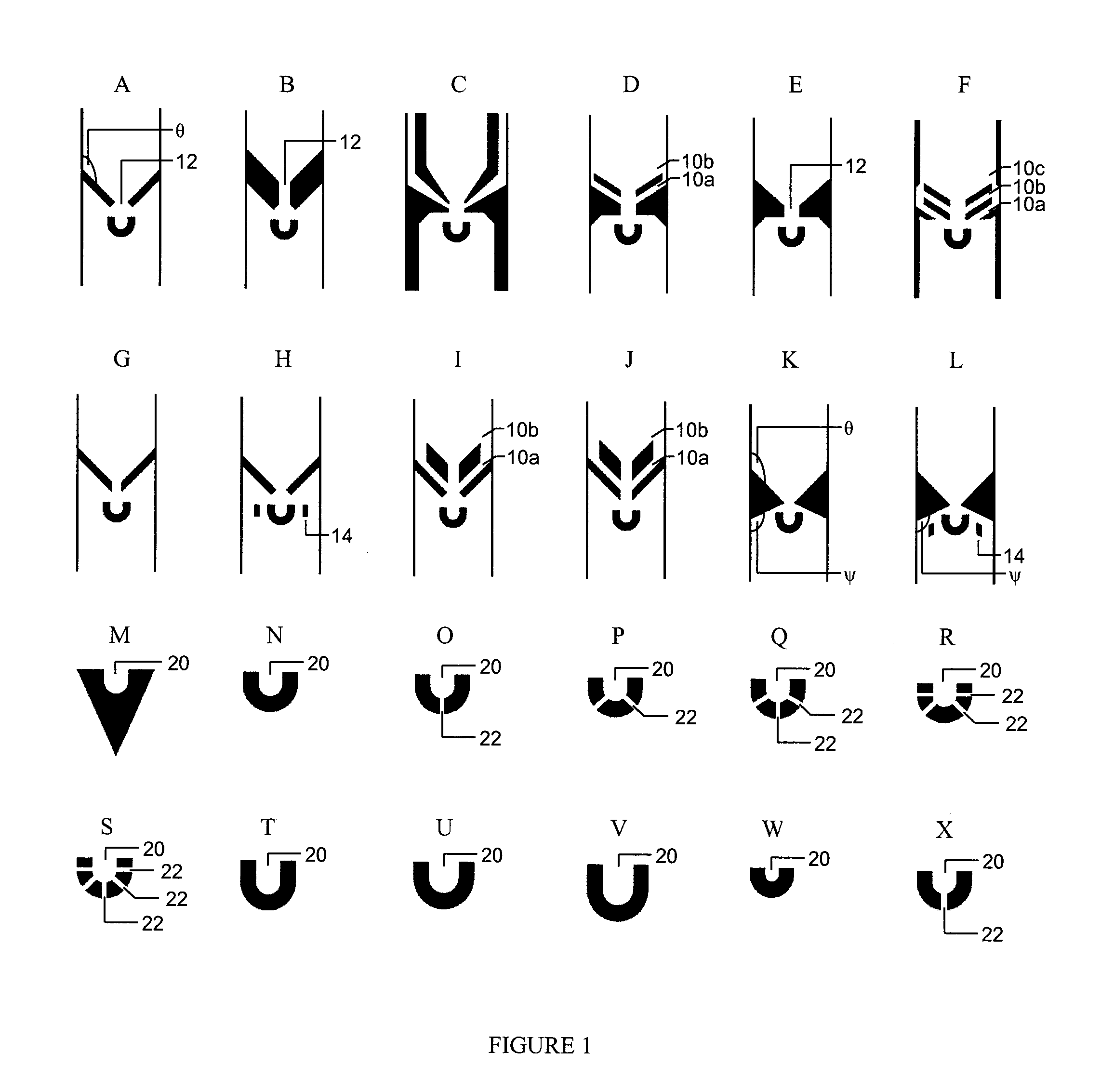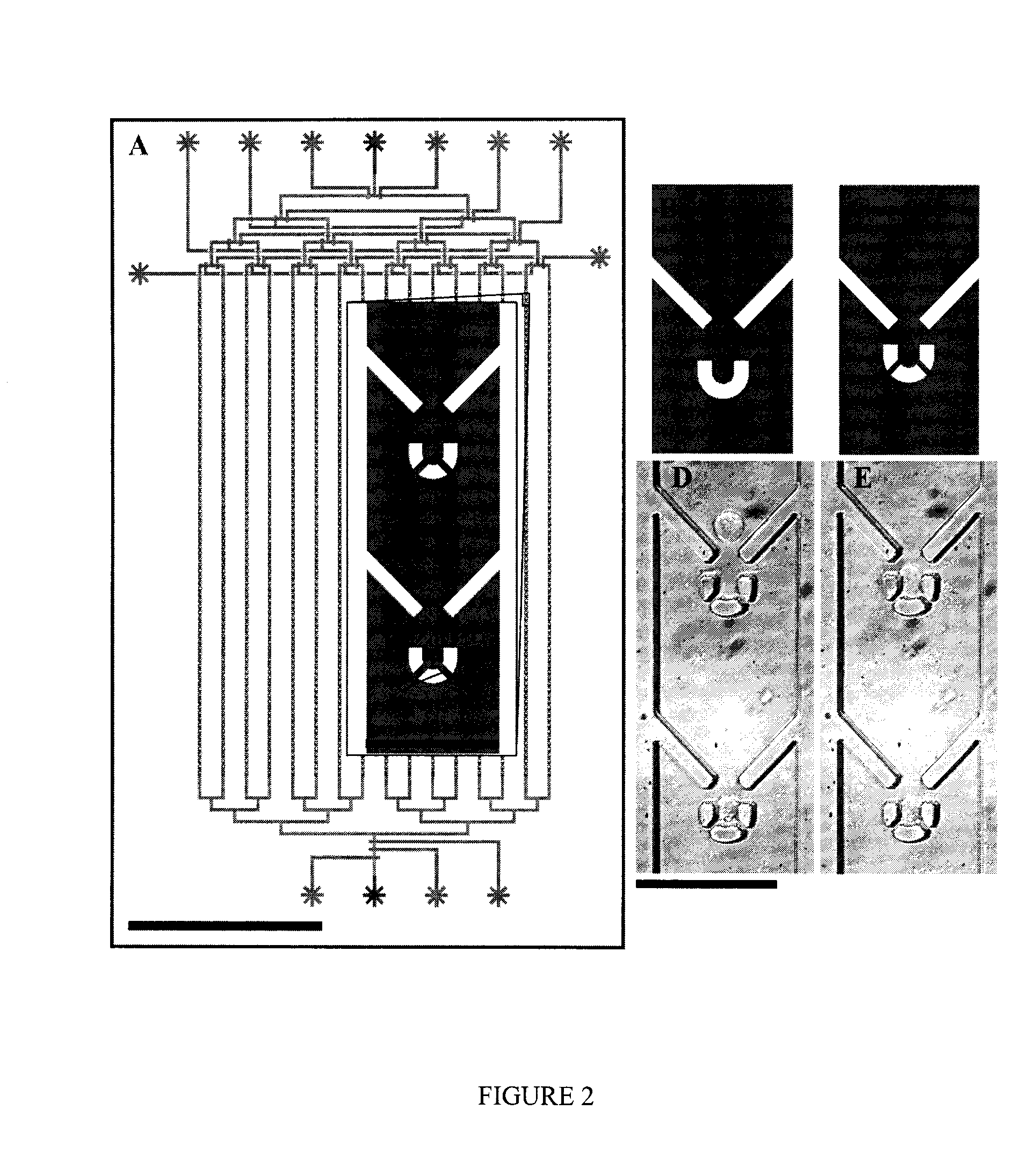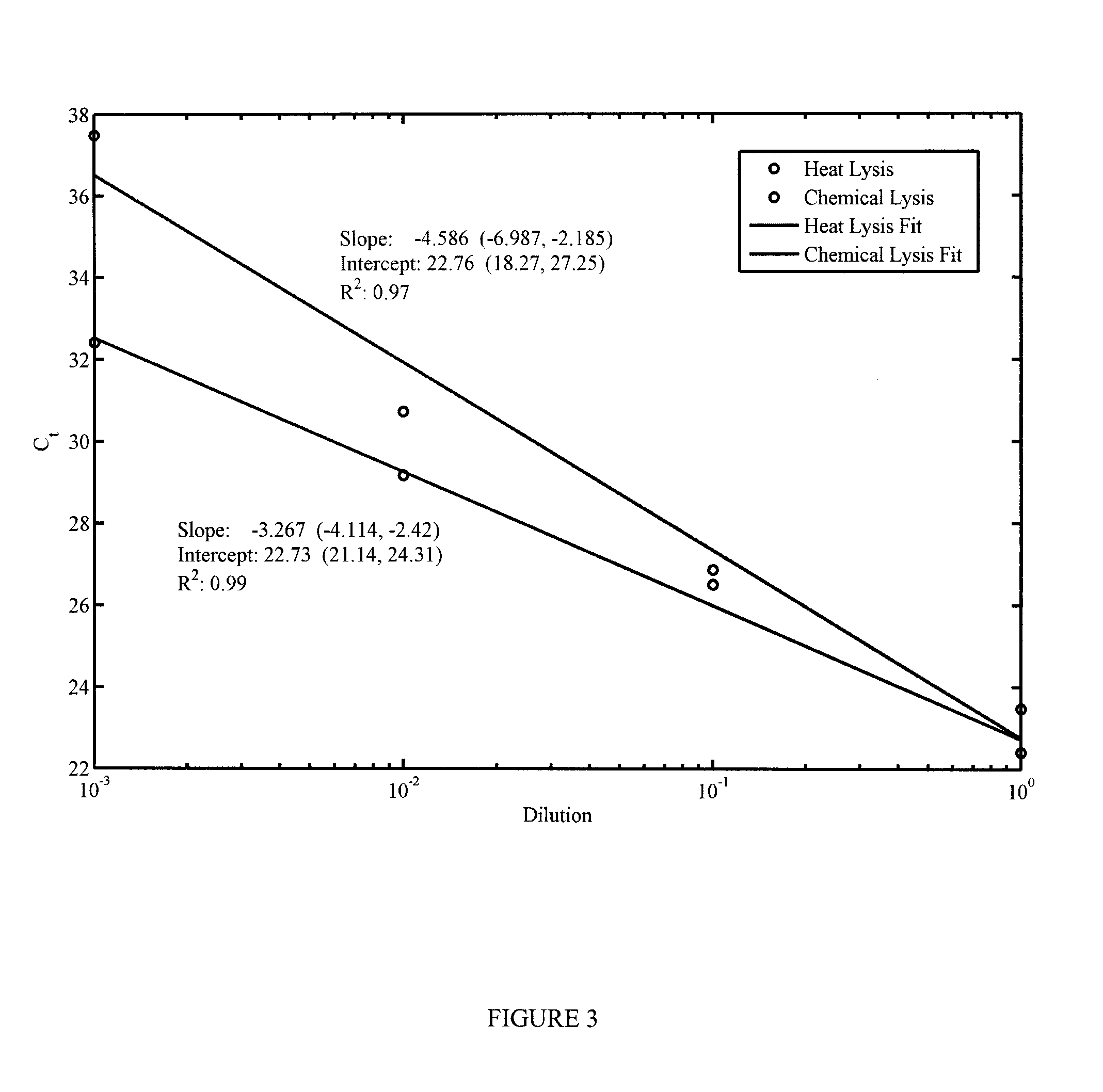Microfluidic Cell Trap and Assay Apparatus for High-Throughput Analysis
a microfluidic cell and assay technology, applied in the field of microfluidic devices, can solve the problems of high reagent cost, low throughput, and difficulty in accurately measuring low abundance transcripts, and achieve the effect of improving cell washing
- Summary
- Abstract
- Description
- Claims
- Application Information
AI Technical Summary
Benefits of technology
Problems solved by technology
Method used
Image
Examples
example 1
Example 1.1
Materials and Methods
Nucleic Acid Detection and Quantification
[0131]DNA quantification through microarray analysis is a highly multiplexed, well established method to assay a sample for thousands of different targets. Specific DNA sequences that have been immobilized on a solid surface act as probes to target molecules in solution. The solution containing these target molecules is flowed over the surface of the microarray, and target molecules bind to the immobilized probes via standard DNA base pairing. Probe-target hybridization is detected and quantified by the detection of a fluorophore or a silver or chemiluminescent target. While microarray analysis has been used on single cells, it requires an amplification step (59) in order to generate the quantity of target molecules required to meet the assay detection limits.
[0132]Single molecule imaging techniques, including fluorescence in situ hybridization (FISH; 60, 61) and single fluorophore imaging (62) have been used t...
example 1.2
Cell Capture
[0136]In order to increase the capture efficiency, decrease the size selectivity of the trap design, and attempt to characterize how trap dimensions affect capture efficiencies for different cell types, a variety of different trap geometries were designed and tested on two different cell lines: K562 cells, a human erythroleukemic cell line with an average diameter of 18 microns, and nBAF3, a murine pro-B-cell line with an average diameter of 12 microns.
[0137]Ninety-six (96) different trap geometries were fabricated and tested in six independent devices. A schematic of cell capture testing device is shown in FIG. 2a. A single device is able to analyze 16 different trap geometries, each replicated 83 times in a single column, with 150 microns separating each trap. A binary demultiplexor (top of device) is used to select the desired trap geometry, and a microfluidic peristaltic pump (bottom of device) is used to pump the cells through the device. The scale bar is 500 micron...
example 1.3
[0143]Two lysis methods were selected for their ease of integration into a microfluidic device: heat lysis, which involves heating the sample to 85° C. for 7 minutes, or a heat-inactivated chemical lysis buffer provided in the Invitrogen SuperScript® III CellsDirect cDNA Synthesis Kit. In order to assess the relative efficiency of each method on releasing miRNA from the cells and determine if further reactions would be inhibited by the chemical lysis buffer, a sample of K562 cells was serially diluted and lysed using each method. Released miRNA from these samples was subsequently reverse-transcribed into cDNA and the amount in each sample was quantified using qPCR.
[0144]The results from this test can be found in FIG. 3. The efficiency of the chemical lysis more closely resembles the expected value of approximately −3.3 cycles per 10-fold dilution. However, the increased benefit of the chemical lysis is reduced by the fact that using it requires the addition of an extra chamber ...
PUM
| Property | Measurement | Unit |
|---|---|---|
| volume | aaaaa | aaaaa |
| volumes | aaaaa | aaaaa |
| volume | aaaaa | aaaaa |
Abstract
Description
Claims
Application Information
 Login to View More
Login to View More - R&D
- Intellectual Property
- Life Sciences
- Materials
- Tech Scout
- Unparalleled Data Quality
- Higher Quality Content
- 60% Fewer Hallucinations
Browse by: Latest US Patents, China's latest patents, Technical Efficacy Thesaurus, Application Domain, Technology Topic, Popular Technical Reports.
© 2025 PatSnap. All rights reserved.Legal|Privacy policy|Modern Slavery Act Transparency Statement|Sitemap|About US| Contact US: help@patsnap.com



